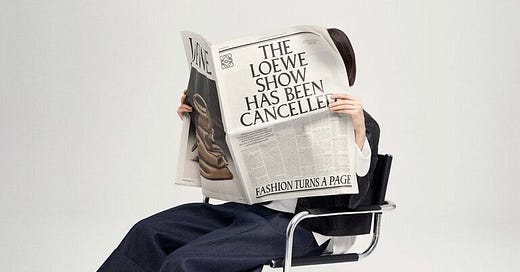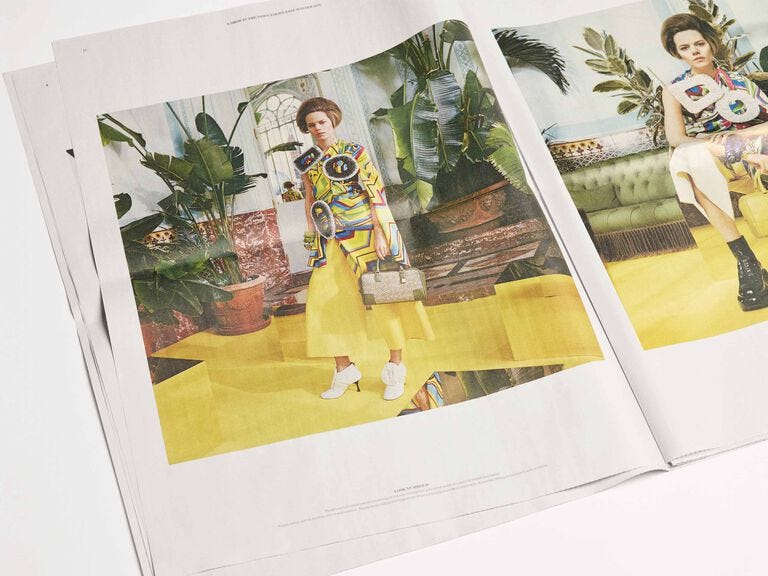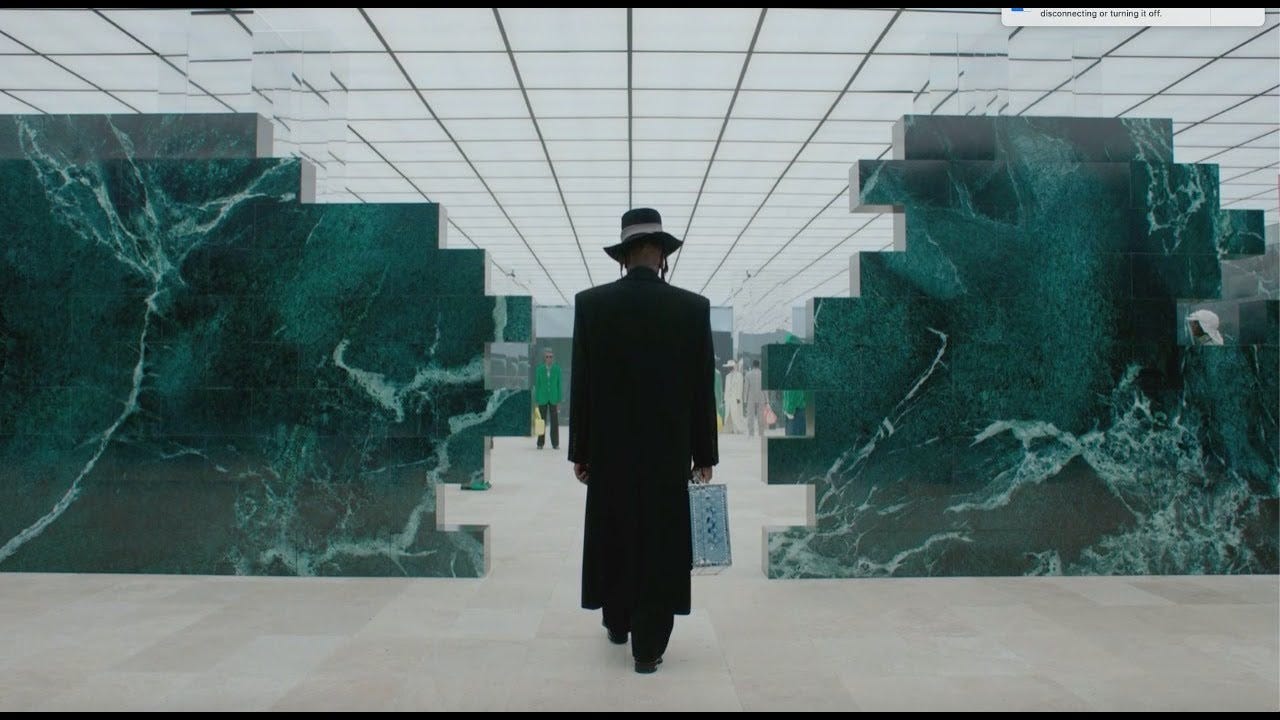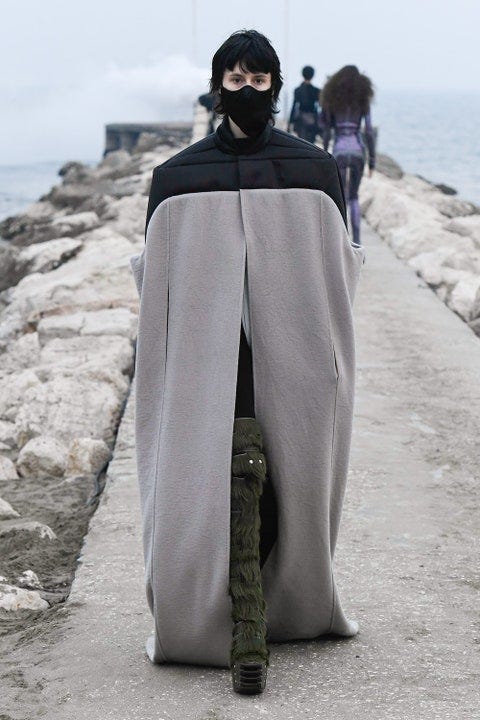The idea that suffering makes great art is a truism hasn’t really held true over the last few years. Despite the odd hope that a Trump presidency could somehow inspire creativity, there was little evidence that music, literature, theater and the like deviated from its late-capitalist path.
2020 proved a harsher blow; in the pandemic, much of the creative world came to a stand still. Theaters and museums close, and art fairs and music festivals were cancelled. Writers complained of debilitating writer’s block. Everyone became an amateur baker or painter, but a new creative renaissance hasn’t been in the books.
Where there has been a creative explosion in light of pandemic restrictions is in fashion. With fashion weeks cancelled and traditional fashion shows on hiatus, fashion houses have been forced to innovate in order to get their collections seen. And innovate they have done.
I’m not a huge fashionista; you’re more likely to find me in 5-year old Uniqlo than in the latest season of any brand. And during quarantine, few people have had the incentive to indulge in high fashion; athleisure and comfort wear sales have been skyrocketing in quarantine. Yet fashion houses have delved into the moment, untethered from the runway altogether, and have created fantasy spaces that speak eloquently to the present moment.
Fashion has long been as much about spectacle as it is about clothing. A mere year ago and a lifetime ago, for the Fall 2020 show, Gucci’s designer Alessandro Michele told Vogue, “We all belong to the same circus, and I really want to go on repeating this ritual.” His show was a literal merry-go-round of fashion, the makeup and dressing happening in the center as the models spun around in front of the press and audience.
Fashion shows always aim to engage the imagination in the clothing, the setting, and the stagecraft, but they usually follow the formula of models walking the runway in front of a high end crowd. Without the bustle and peacocking of fashion week, without the fashion editors sitting in front rows next to celebrities, or the PR machine to put the looks in glossy magazines and global Style sections, fashion has delved headfirst into the imagination it takes to be creative within the past year’s restraints.
In an effort to recreate the frenetic energy of fashion’s live shows, Hermès held its show simultaneously in three different cities, with multiple choreographers creating dances against the signature Hermès orange backdrop. “It was important to keep this experience live—to have the specific adrenaline of a show,” said Hermès designer Nadège Vanhee-Cybulski. ““It’s urgent now to live again.”
“What we missed in the pandemic was above all the sense of sharing and of communality that culture gives us,” Pierpaolo Piccioli of Valentino said of his show, in which models walked into a starkly empty Milano theater. Opening with the singer Cosima singing a haunting rendition of Nothing Compares 2 U, the show felt like an intimate experience, the kind we used to have when going to small venues and being transported by a performance.
Loewe held a ‘cancelled’ fashion show, printing headlines of cancellation on a printing press and distributing the show via a ‘newspaper,’ creating an artifact out of what is usually an ephemeral live experience. The clothing itself is bright, colorful and optimistic. Designer Johnathan Anderson says,”I think it’s about this idea of projecting what a new reality will hopefully be.I think fashion is going to be important in the next while, in making people gain the confidence of going back out and dressing up again.”
Altazurra’s statement is one that’s become familiar to many of us: Comfort, but make it fashion. After months of sweatpants and pjs, sales of clothes that are comfortable have skyrocketed. And Altazurra is owning on the trend. Set in a softly lit townhouse, the show tries to evoke a hominess that doesn’t often show up in the glitz of fashion week.
Louis Vuitton, under the direction of Virgil Abloh, had a menswear show like no other. “The snow will melt, the ice will thaw,” says Saul Williams, the deep-voiced poet/rapper over a mix of winter sport, poetry, hip hop, and dance. Lauded as well for its odes to Black culture, it nods to the other creative renaissance that’s been decades in the making. The video, streamed live, imagined a modernist airport occupied by the most fashionable of travelers, rushing coffee in hand, or idly waiting, or elegantly breakdancing. It’s a dream of airports, the liminal space of travel when time and geography are suspended. And in Abloh’s vision, it finds perfect alchemy with another creative renaissance, that of Black culture and the inclusion of Black voices in the heights of fashion.
What can we learn from fashion?
Finding poetry in the moment.
Whether it’s the longing for travel and culture, or the comfort of home, or testing the limits of geography, these fashion houses have discovered new ways to interpret the moment.
Recognizing freedom in restraint
Between comfort clothing, disrupted supply chains and labor, and the challenges to shopping and live events, the fashion industry certainly felt the pain of 2020. But without being tied to the time and place, the audiences and expectations, these designers imagined new ways to show their fashion, beyond the rules of fashion weeks.
Looking ahead while staying present.
Fashion’s task is to create trends, evoking the present while defining what’s to come. This year, the fall and winter shows must envision a post-vaccine future that’s sure to have its fair share of surprises as well. Will we be exuberant, free of the virus that’s locked us in for so long? Will we be cautious and careful? Will there be other variants that gut us, weird crises that waylay us?
Betting on what’s to come.
In general the world of fashion seems optimistic; according to Vanessa Friedman at the NYTimes, they’re preparing us for a grand and fancy party.
Not everyone agrees. Rick Owens, fashion’s favorite goth lord, held his show at the beach across from his house, aiming for the at-home circumscribed environment that defined 2020 for many fo us. He has a less certain outlook: “I know we’re supposed to be all about hope and moving forward, but the menace has not disappeared. On the other hand, good has triumphed over evil so far.”
Want to support Framing or hear more from us?










